On a glorious winter day, Doringkloof Walk, Addo Elephant National Park, granted spectacular views of forested and fynbos-covered peaks and flowering aloes, as well as sightings of Eastern Cape birds and wildlife.
Early on Monday morning, June 29, Vilis and I ate hot porridge laced with apple and cinnamon on the rondavel’s deck at Addo Elephant National Park‘s Main Camp. Our breaths puffed from our mouths into the cool, dawn air. Then we packed up, left Main Camp and skirted the park’s borders as we drove north toward our hiking destination – Zuurberg and its Doringkloof Walk in the park’s northern section where there are no lions or elephants. We passed vast citrus orchards and climbed a narrow, twisting gravel road up a low, rocky mountain to the park entrance. (Tap on photos to enlarge.)
At 9 a.m., we set out on eleven-kilometre Doringkloof Walk. Near the trailhead, I spotted greater double-collared sunbirds feeding on the nectar of flowering shrubs. Huge grey tree stumps told tales of past logging. Farther along on the trail, we hiked over open, rocky ground vegetated with short, dry-looking heaths, herbs and grasses interspersed with low shrubs, cycads and aloes. This was our first encounter with fynbos, a vegetation type found only at the southern tip of Africa.
After rounding the mountainside, we hiked steep switchbacks down through dense, tangled thicket within the ravine or kloof, to a shallow creek, which we crossed again and again as we made our way toward Blou Gat Pool.
Vilis spotted a small antelope bounding up a steep rock slope near the creek. We heard frantic bleating and saw a young antelope trying to scramble up the slope, presumably following its mother. Its reddish coat was flecked with white spots on the flank. I sat on a rock in the creekbed and studied my Field Guide to Mammals of Southern Africa until I identified the antelope lamb as a bushbuck.
We saw numerous small cloven-hoof tracks and diggings and scrapes on the trail and thought they were perhaps those of bushbucks or of bushpigs, which also inhabit the area, according to a park information leaflet. Farther along the trail, tall trees grew beside the creek. I heard low growls and thought of monkeys or baboons, both of which live in the area, but the growling calls belonged to a pair of Knysna turacos – long-tailed birds with blue-green wings, red eyes and gorgeous green heads and crests.
Near Blou Gat Pool, with its rocky ledges and milky water, we began the upward half of our trek, panting our way up steep switchbacks and past aloes that towered over us. Mid-day sun glared off the rocky slope, and we shed jackets and sweaters as weascended the 650-metre mountain, completing Doringkloof Walk, Addo Elephant National Park, in three hours, forty-five minutes. An excellent hike, with a great view-to-forest ratio. For our first hike in South Africa, we’d picked a good one!

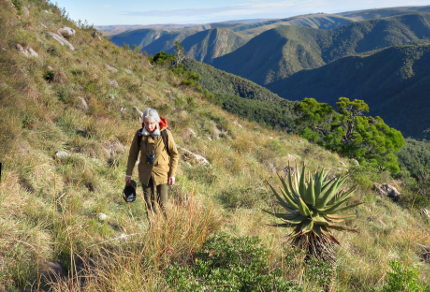

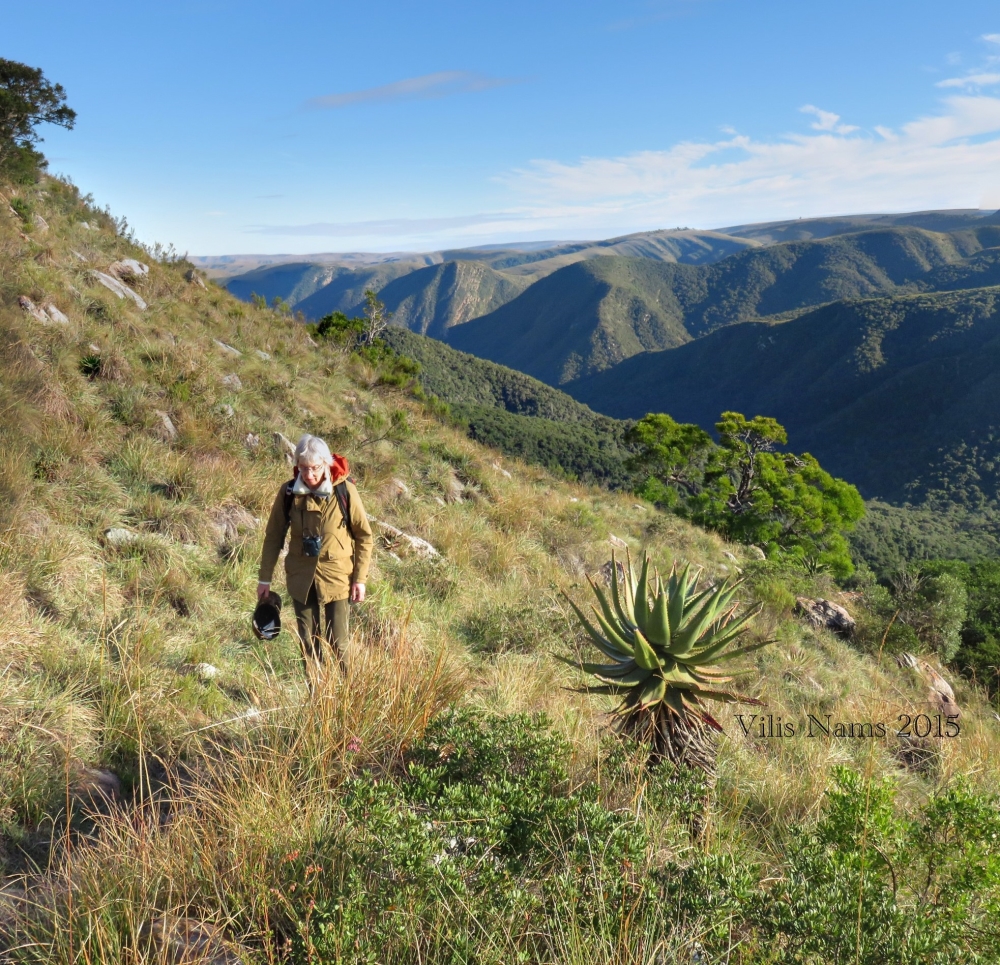
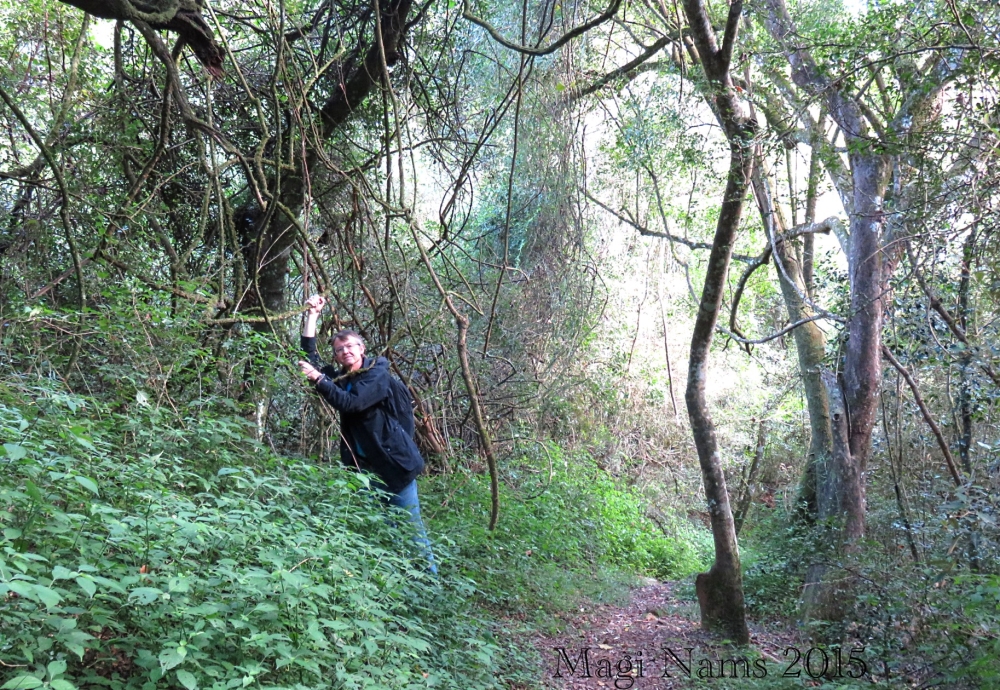
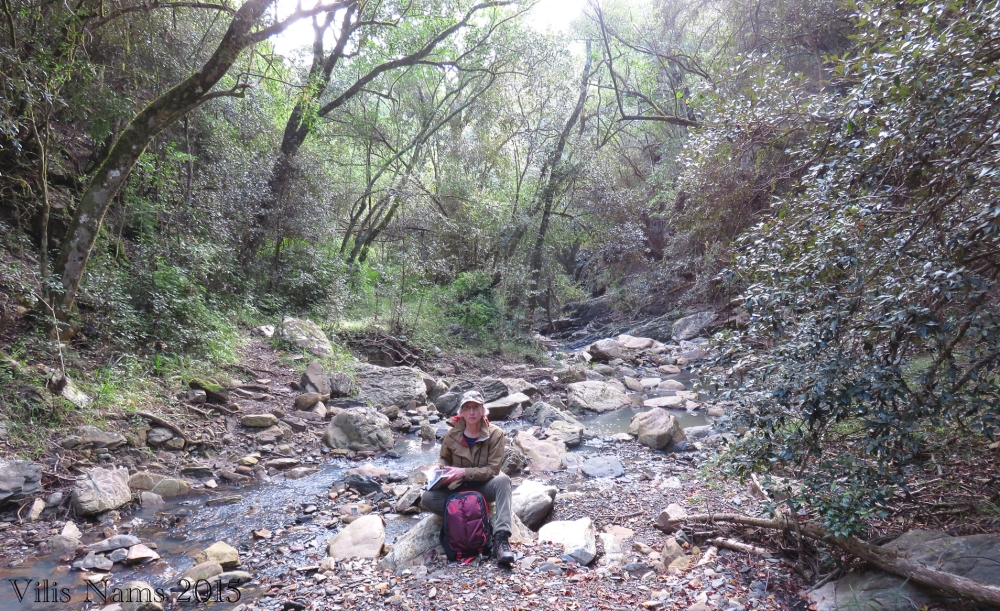
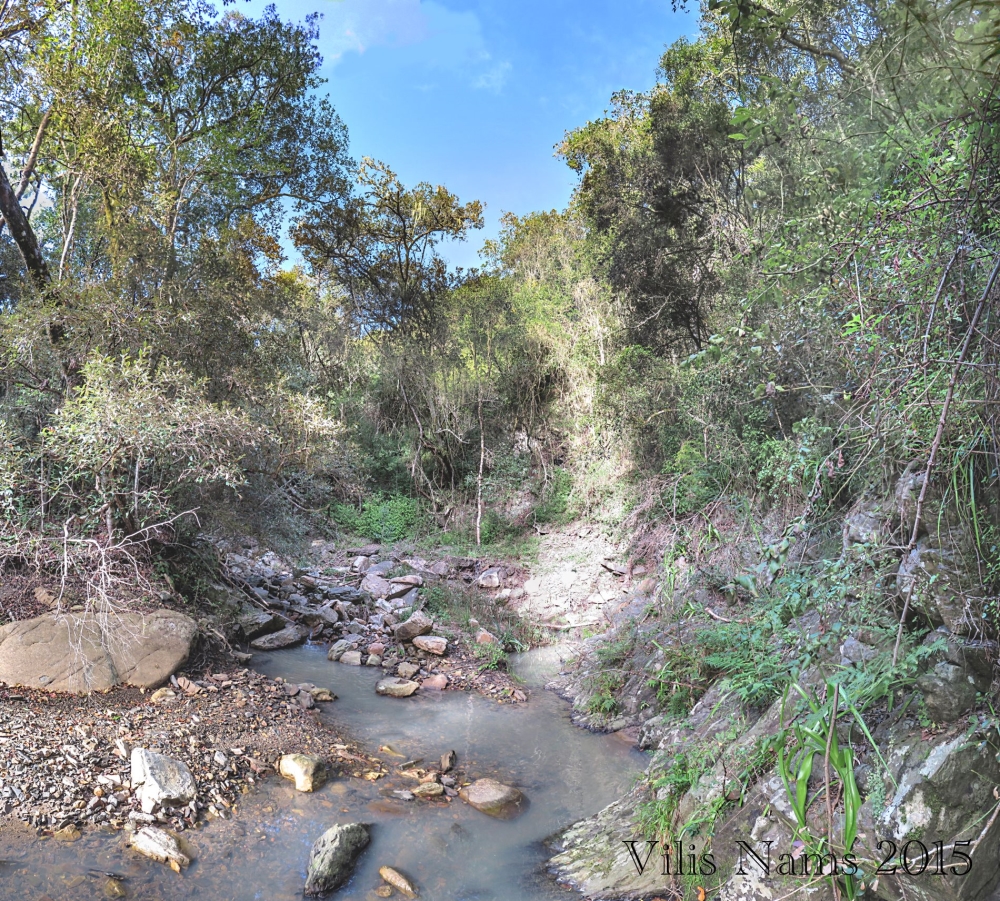
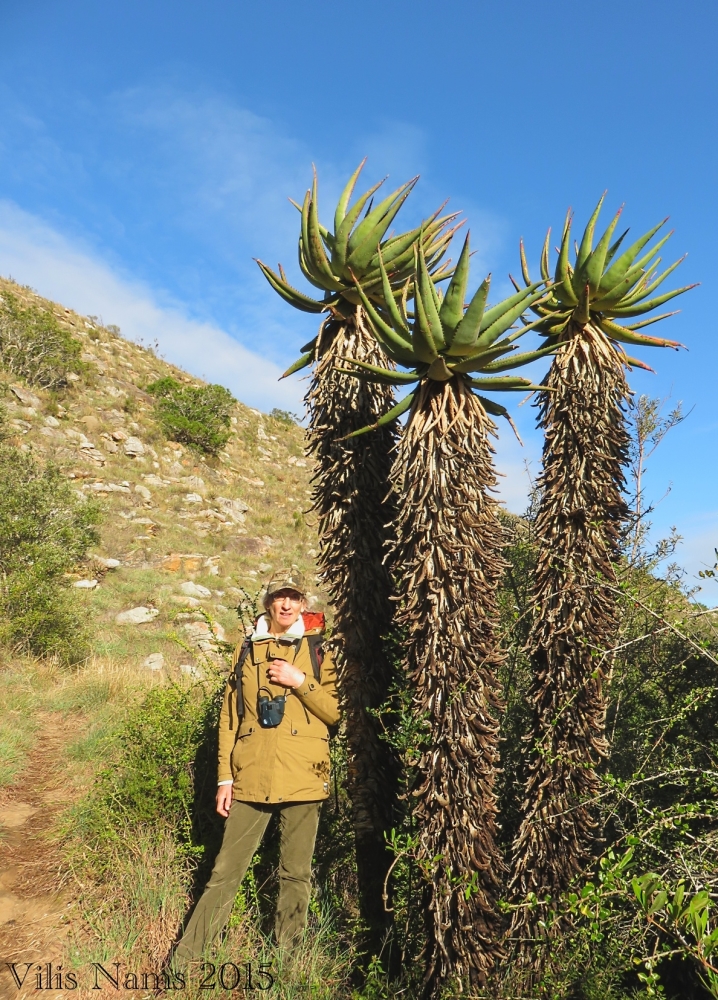



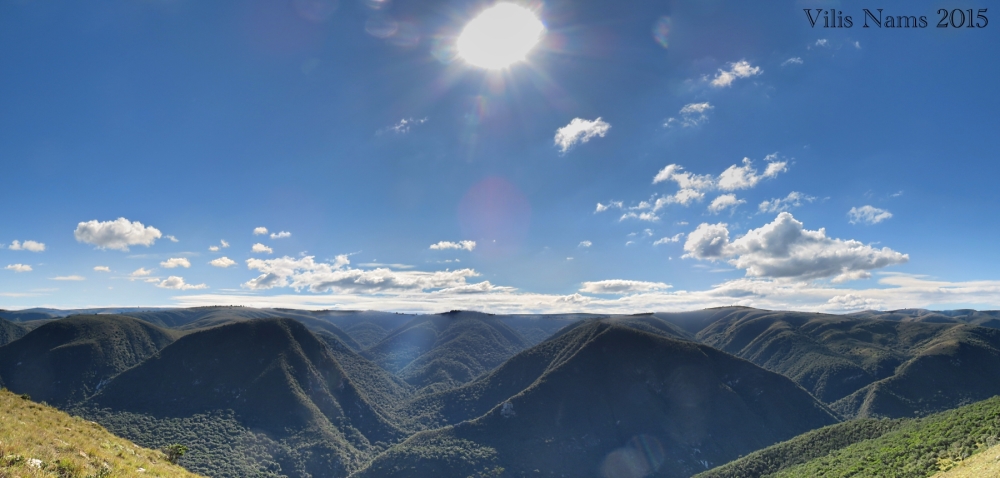
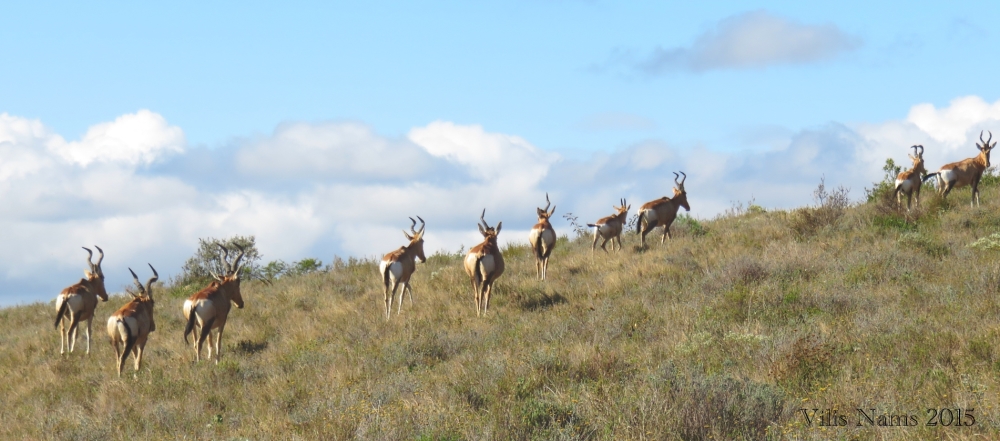

Hi loved yo article. How do i get in contact with the offices of doringkloof walk. I need to book for a hike.
Hi Zandi. For information about hiking in Addo Elephant National Park, check out the South Africa National Parks website at https://www.sanparks.org/parks/addo/tourism/activities/hiking.php. I don’t believe we had to book ahead for the Doringkloof Walk. We just checked in at the parks office when we arrived at the trailhead. Stay tuned to my website for updates on my book-in-progress about my six months in South Africa. Cheers!